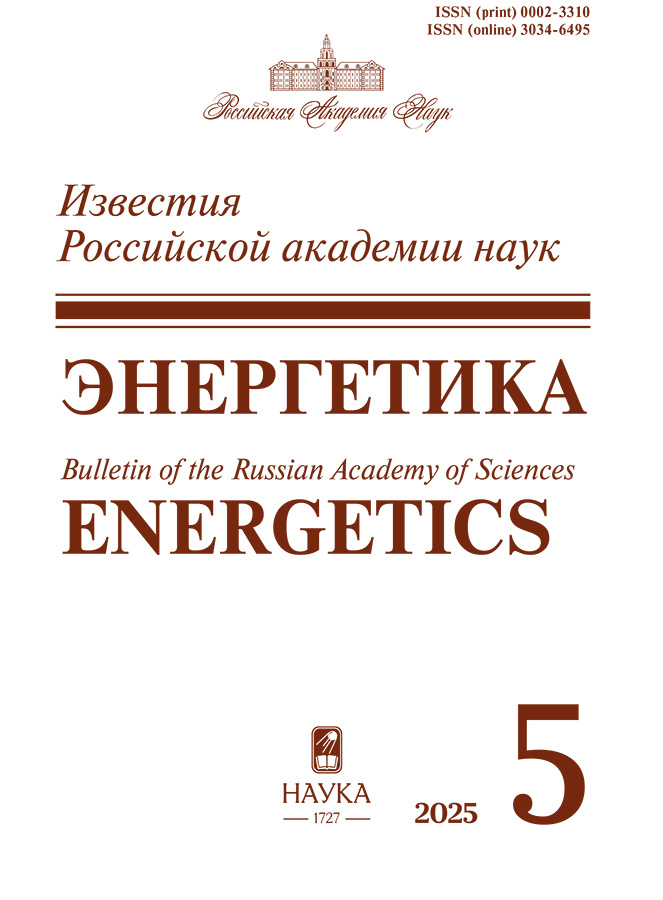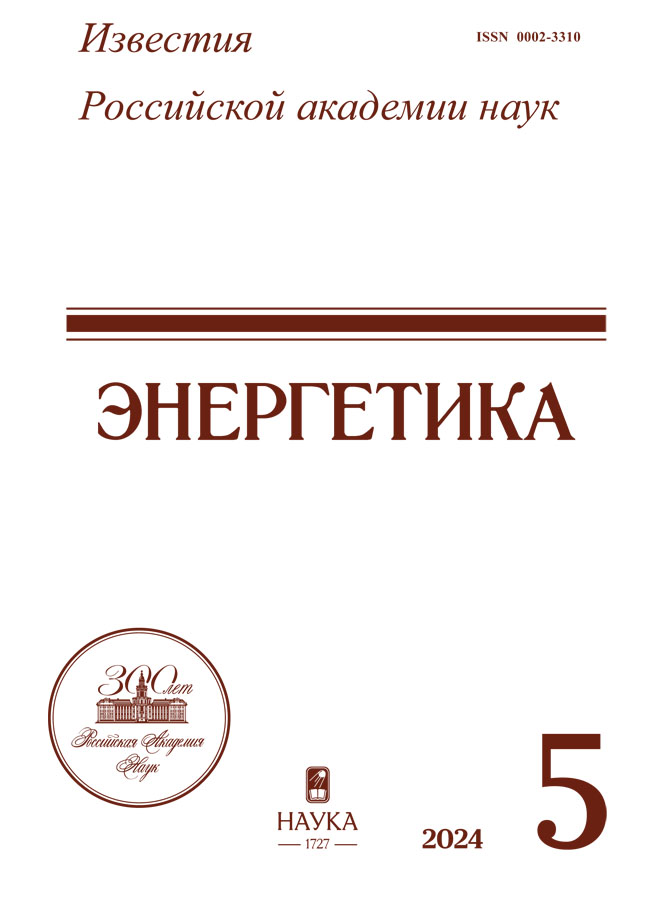Оценка влияния теплотехнических характеристик непроектных бурых углей на их пригодность для сжигания в топке энергетического котла
- Авторы: Чернов С.Л.1, Прохоров В.Б.1, Апаров В.Д.1, Пай А.В.1
-
Учреждения:
- Федеральное государственное бюджетное образовательное учреждение высшего образования “Национальный исследовательский университет “МЭИ”
- Выпуск: № 5 (2024)
- Страницы: 74-87
- Раздел: Статьи
- URL: https://kazanmedjournal.ru/0002-3310/article/view/660251
- DOI: https://doi.org/10.31857/S0002331024050067
- ID: 660251
Цитировать
Полный текст
Аннотация
Возможность сжигания различных бурых углей (БУ) в топке котла БКЗ-420-140-6 исследовалась с помощью численного моделирования в программе ANSYS Fluent. Для проверки составленной численной модели сжигания твердого топлива предварительно проведена ее валидация, применительно к сжиганию БУ определенного состава путем сравнения результатов расчетов с данными, полученными при режимно-наладочных испытаниях реального котла.
Был разработан способ усреднения характеристик угля и получены зависимости, определяющие состав угля на основании анализа состава 14 типов углей в диапазоне значений низшей теплоты сгорания от 7.5 до 16 МДж/кг. По полученным зависимостям для 4-х значений определен теоретический усредненный состав (ТУС) углей. Для одного из ТУС на 10% в большую и меньшую стороны варьировалась влажность.
В качестве показателей эффективности работы топочной камеры котла, приняты температура газов на выходе из топочной камеры, механический недожог и концентрация оксидов азота в дымовых газах. Результаты численного моделирования показывают, что при теплотворной способности топлива 10 МДж/кг механический недожог превышает допустимые нормативы. Наибольшая концентрация оксидов азота на уровне 800–900 мг/нм3 наблюдается для бурых углей с высокой и наибольшим содержанием углерода. Также показано, что применение прямоточных горелок с организацией ступенчатого сжигания топлива позволяет в 3.25 раза снизить образование оксидов азота в топке по сравнению с исходной схемой сжигания с использованием существующих вихревых горелочных устройств. Влияние низшей теплоты сгорания топлива на температуру газов на выходе из топочной камеры в диапазоне от 11.75 до 16.45 МДж/кг незначительное. Повышение влажности топлива сказывается на температуре газов на выходе из топочной камеры и на механическом недожоге только при значении более примерно 45%. В целом исследования показали, что рассматриваемая топка позволяет сжигать различные бурые угли при изменении физико-химического состава и теплотехнических характеристик в широких пределах.
Полный текст
Об авторах
С. Л. Чернов
Федеральное государственное бюджетное образовательное учреждение высшего образования “Национальный исследовательский университет “МЭИ”
Автор, ответственный за переписку.
Email: ChernovSL@mpei.ru
Россия, Москва
В. Б. Прохоров
Федеральное государственное бюджетное образовательное учреждение высшего образования “Национальный исследовательский университет “МЭИ”
Email: ProkhorovVB@mpei.ru
Россия, Москва
В. Д. Апаров
Федеральное государственное бюджетное образовательное учреждение высшего образования “Национальный исследовательский университет “МЭИ”
Email: AparovVD@mpei.ru
Россия, Москва
А. В. Пай
Федеральное государственное бюджетное образовательное учреждение высшего образования “Национальный исследовательский университет “МЭИ”
Email: PaiAV@mpei.ru
Россия, Москва
Список литературы
- Майданик М.Н., Вербовецкий Э.Х., Тугов А.Н. Предварительная оценка возможности перевода котлов тепловых электростанций на сжигание альтернативного угля // Теплоэнергетика. 2021. № 9. С. 33–42.
- Осинцев В.В. и др. Анализ результатов опытного сжигания высокореакционного бурого угля на котле БКЗ-210-140Ф // Теплоэнергетика. 2003. № 8. С. 27–31.
- Двойнишников В.А., Шумилов Т.И. Организация сжигания канскоачинских углей в паровых котлах энергоблоков 300 МВт Рязанской ГРЭС // Теплоэнергетика. 1998. № 6. С. 2–7.
- Al-Abbas A.H., Naser J., Hussein E.K. Numerical simulation of brown coal combustion in a 550 MW tangentially-fired furnace under different operating conditions // Fuel. 2013. V. 107. P. 688–698.
- Hashimoto N., Shirai H. Numerical simulation of sub-bituminous coal and bituminous coal mixed combustion employing tabulated-devolatilization-process model // Energy. 2014. V. 71. P. 399–413.
- Sheng C. et al. A computational fluid dynamics based study of the combustion characteristics of coal blends in pulverised coal-fired furnace // Fuel. 2004. V. 83. № 11–12. С. 1543–1552.
- Su S., Pohl J.H., Holcombe D. Fouling propensities of blended coals in pulverized coal-fired power station boilers // Fuel. 2003. V. 82. № 13. P. 1653–1667.
- Ikeda M. et al. Emission characteristics of NOx and unburned carbon in fly ash during combustion of blends of bituminous/sub-bituminous coals // Fuel. 2003. V. 82. № 15–17. P. 1851–1857.
- Абрютин А.А., Карасина Э.С., Петросян Р.А. Тепловой расчет котлов. Нормативный метод – СПб.: Изд-во “ВТИ” и НПО “ЦКТИ”, 1998. 258 c.
- Prokhorov V.B., Fomenko M.V. and Fomenko N.E. Solid fuel combustion processes modelling in the furnace in terms of the boiler K-50-14-250. The Third Conference “Problems of Thermal Physics and Power Engineering”, Journal of Physics: Conference Series 1683 (2020) 042050.
- Chernov S.L., Prokhorov V. B., Pay A.V., Aparov V.D. Assessment of the Slagging Tendency in Power Plant Boiler Furnaces Depending on the Physical-Chemical Characteristics of Ash and Coal // Problems of the Regional Energetics. 2023. Vol. 60. No. 4. pp. 71–85.
Дополнительные файлы

















